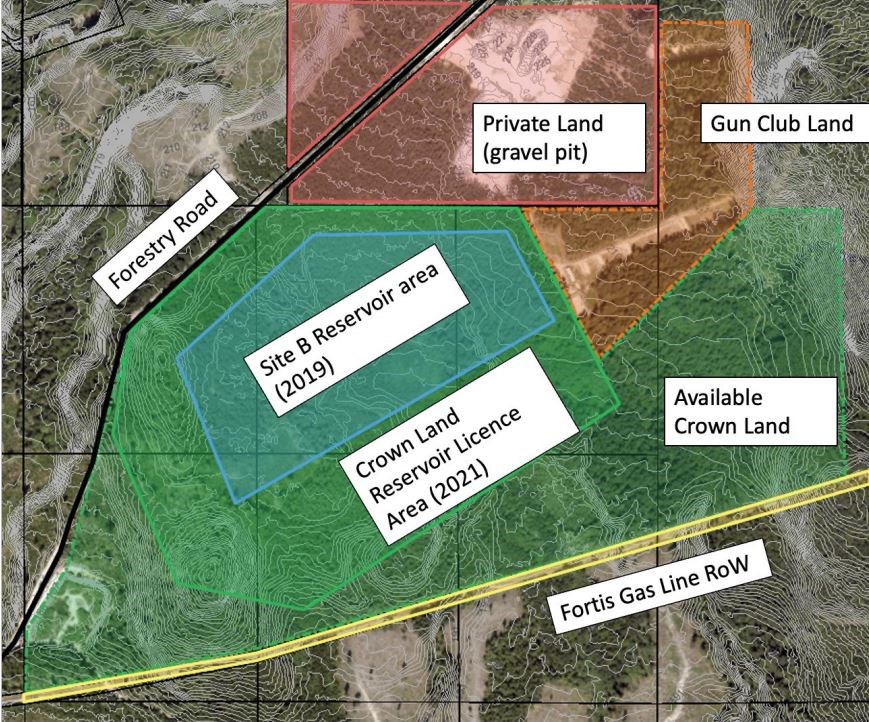As the shíshálh Nation looks at fast-tracking water reservoirs on its Sechelt area gravel lands, the Sunshine Coast Regional District (SCRD) continues with planning for another artificial lake water storage project.
At its July 6 meeting, the SCRD board was advised by spokesperson for consulting firm Integrated Sustainability Paul Nash that a proposed Site B reservoir project could be built large enough to meet demands for year-round storage for the Chapman water system beyond the year 2050. He stated if the option of a 7.6 million cubic metre (Mm3) reservoir were to get the go-ahead, decommissioning of the dams and infrastructure at Chapman and Edwards and re-naturalization of those lakes is a possibility.
Re-thinking the system and the storage needs
Nash framed this reservoir project as an opportunity to “re-engineer” that water system, which could include relocating the water treatment plant across Chapman Creek from its current location to below the new reservoir. Such a move would see those two new pieces of the water system in a northern portion of the Roberts Creek area, north of Sechelt Airport and east of the Sunshine Coast Rod and Gun Club’s outdoor shooting range.
In 2019, the board identified Site B as the preferred location for a 1.3 Mm3 water storage site. It hired Integrated Sustainability to further refine planning for what was estimated to be a $53 million project that was to be completed by 2027.
Nash noted that site exploration work did not progress as planned as provincial drilling permits applied for in May 2020 were issued this March, almost three years later. That delay gave the consultants, the same firm providing the update of the region’s water demand analysis, time to re-think the proposed reservoir size.
“The drought of 2022 has changed things, and the raw water reservoir needs to change too,” Nash stated.
Four options presented
Brought forward were four concepts to see a project with up to eight times more water storage potential than originally asked for. In two of the four expanded concepts presented, reservoir volumes would exceed the 5.6 Mm3, the water storage level projected as needed by 2050 in the updated water demand analysis. In each of the expansion options, the consultants suggest increasing reservoir depth by building higher sidewalls and expanding the project’s footprint. The original concept’s depth was set at 10 metres. The new proposals feature depths from 12 to 27 metres. In terms of land mass coverage, the initial plan occupied 15 hectares and the expanded proposals range from 20 to 50 hectares in size.
In step with projected size increases came estimated cost escalations. Nash’s update saw construction dollar values go down to $44 million for the project at the size requested in 2019. That, he said, was the result of favourable reservoir construction ground conditions that were revealed in the recent drilling program.
For the larger volume proposals, estimated costs go up to $156 million. Costs for the largest option, he said, could be offset with the potential to install hydro co-generation, revenue from gravel extraction, the benefits from allowing lake re-naturalization, and freeing up of lands for return to the shíshálh Nation. In addition, the artificial lake created by the largest option could enhance the community as a recreation asset and would be large enough to accommodate filling the water tanks of aircraft used in forest firefighting.
A more detailed report on the Site B project potential is slated to come before the board later this year. Depending on board decisions on proceeding with the project and considerations such as permitting timeframes, Nash said that sometime between 2030 to 2035 was the earliest he anticipated to bring that project online if construction were to start in 2027.



